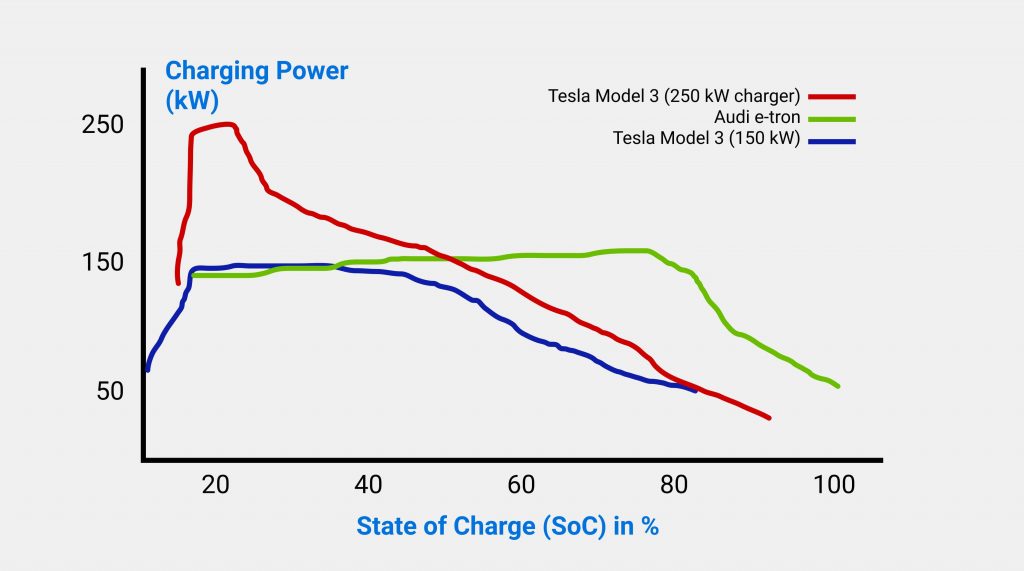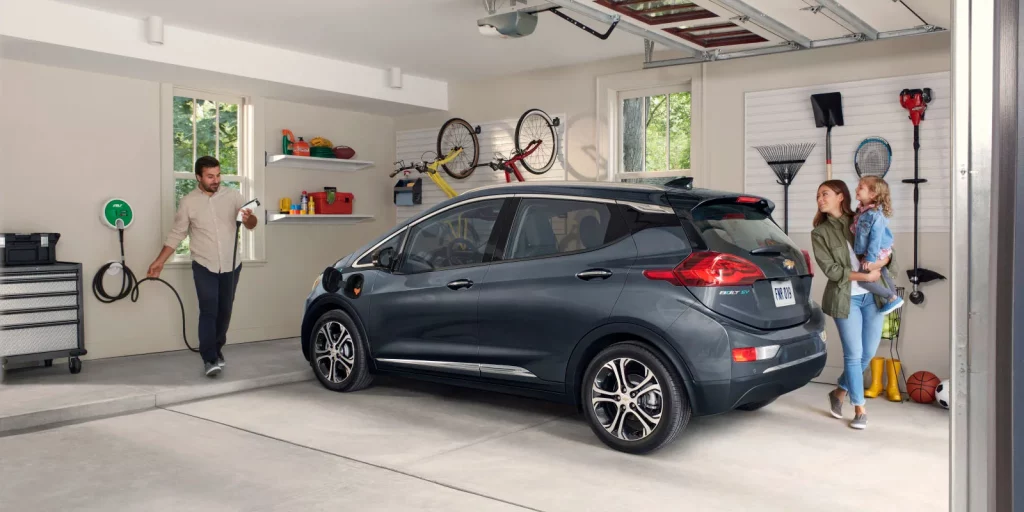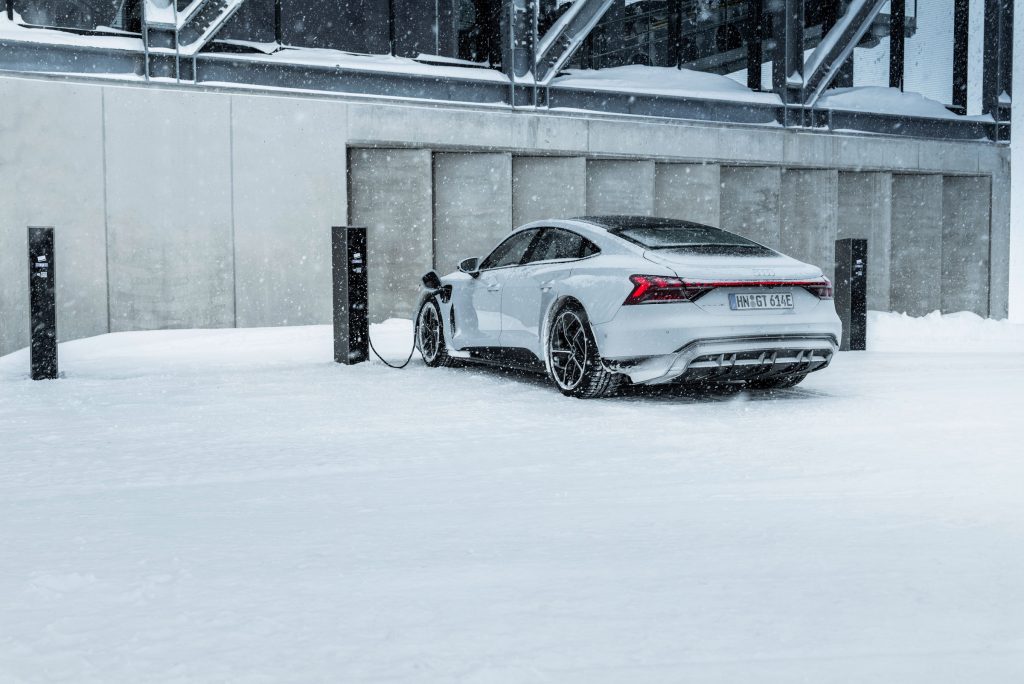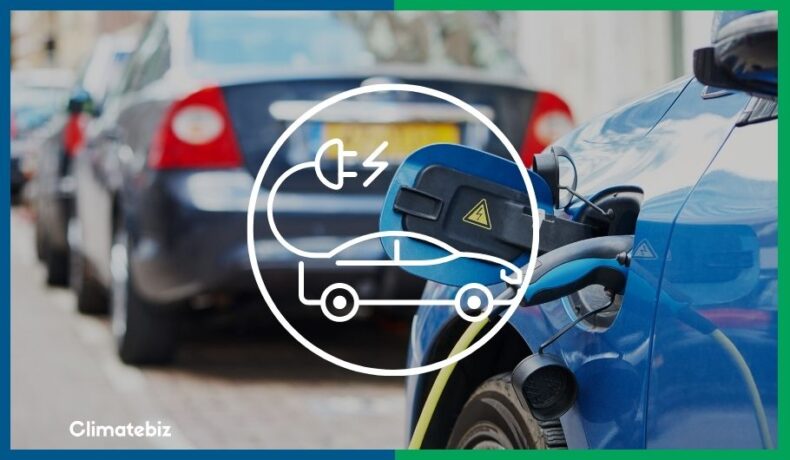Have your fingers ever been so cold that they can barely move? Most things struggle to work properly in cold temperatures. Your EV battery is no exception. That’s where preconditioning your electric car battery comes in.
In the winter, car windows get icy, and some door handles freeze shut. Preconditioning EV batteries allows for better battery charging and warms your car’s cabin. That sounds like a win-win to us.
But what is EV battery preconditioning, and how does it affect your car?
Table of Contents
What Is EV Battery Preconditioning?
Preconditioning your electric car battery involves warming the batteries up to an optimal temperature before charging them. Pre-heating your batteries preserves energy, increases charging speed, and keeps them healthy.
A study by the Idaho National Laboratory proved that charging speed decreases by 36% when your battery is cold.
Preconditioning your electric car battery will not increase your mile range. Instead, it’ll save the power you would have used for climate control. Doing so increases your electrical range.
Why Do EV Batteries Charge Slower In Cold Weather?
Did you know that EV car batteries regulate how much power they can take in? So while a charging station may provide a steady power supply, the car regulates how much power it accepts.
As the temperature drops, the electrochemical process in the batteries slows down – causing them to accept less current.
Using a graph called the charging curve, we can see how colder batteries charge slower than batteries at a preconditioned temperature. An electric car’s charging curve shows how charging speed changes throughout a charging session.
The ideal temperature of your batteries should be 50ºF. While anything above 32ºF is fine, the optimal range is between 46ºF and 50ºF.
It’s also interesting to note that the temperature of your EV battery doesn’t increase its charging performance. In other words, there’s no correlation between warmer batteries and an increase in charging time.
For example, a battery at 46ºF won’t charge faster than one at 50ºF. This is because both the batteries are preconditioned and ready for fast charging.

Source: www.ampcontrol.io
How Do You Precondition An EV Battery For Fast Charging?
Luckily, setting your electric car up for preconditioning is simple and quick. There are a couple of ways to approach it, mainly through the onboard computer or an app.
You can find the preconditioning settings under ‘settings > vehicle’ or ‘settings > vehicle > climate control’. However, this is a general idea, and it would be best to look up where the controls are for your model.
Alternatively, if your electric vehicle comes with an app, you can find the settings in-app. For example, you can connect the Ohme app to your car, allowing it to precondition the battery and cabin.
Or you can always use the EV manufacturers app like the Tesla app or My Z.E for Renault models.
Fast Charging
When you’re fast charging your car at a DC charging station, your vehicle will automatically precondition. Well, that’s if you’ve turned this setting on. Then, once your batteries are at optimal temperatures, they will begin to charge.
Failing to precondition your batteries while fast charging may damage the cells and decrease the battery’s lifespan
Restrictions When Auto-Preconditioning
You’ll find that most models will have requirements to adhere to before preconditioning. For example, the Renault Leaf won’t precondition if it’s unplugged and has less than 45% charge left in its battery.
Additionally, many EVs require that you automatically set a departure time to precondition. The car’s onboard computer will then calculate how long it needs to precondition. This nifty feature will warm the batteries and charge your car so that you’re ready to go.
Will Preconditioning Drain Your Battery?
Preconditioning your electric car battery will not drain it because the process uses power from the grid. Preconditioning allows you to jump in your now-toasty car with a fully charged battery.
Charging your car overnight is perfect for preconditioning. The batteries will use the power from the wall when preconditioning kicks in. Once the batteries are warmed up, the systems will automatically swap the input to the batteries.
But What Happens When Your Car Is Unplugged?
When your EV is unplugged, preconditioning will use power from your battery. But, if you consider that a preconditioned battery will save you charging time and money, it’s still worth it.
Later, we’ll detail how much preconditioning your electric car battery will save you. But, for now, let’s see how many electrical miles you’ll lose if you precondition your car.
Let’s look at the average EV that takes 7.2 kWh per hour to charge. According to Tesla, it may take 45 minutes or more for their batteries to reach optimal charging temperatures. So, preconditioning your car will use between 2.3 and 5.4 kWh.
On average, one kWh allows you to travel for 3 miles. This means that preconditioning your car will cost you 6 to 16 miles.
According to consumer reports, in a Nissan Leaf, preconditioning your EV battery will cost you $0.56.
When Should You Precondition Your Electric Car?

Source: electrek
If you live in a climate where the temperature drops below 32ºF, we recommend EV preconditioning.
Leaving your car outside during a cold night or in an unheated garage will cause the battery temperature to drop. In this case, it’s essential to pre-heat the battery.
When your battery is cold, it uses some of the power from the charging station to warm itself. Because of this, it doesn’t charge efficiently, taking longer and using more electricity.
It’s also important to note that your battery won’t heat up just by driving your car. So at the end of the day, the best way to ensure it’s heated sufficiently is to precondition your EV.
Can Preconditioning Your EV Battery Save Money?

Source: autoevolution.com
If you’re looking to fast charge your EV, you’ll most likely use a level 2 charging outlet. You can install these in your home and use them to precondition your EVs battery.
Most money-saving features like regenerative braking don’t work if you don’t precondition your EV battery. In addition, the maximum charge rate will be limited, and charge speeds will be slower.
When you precondition your car’s battery, there’s no need for your climate control to be on full blast. When you climb in, the cabin is already at a comfortable temperature. This feature will save electricity that you would have used for your climate control.
Now let’s look at how preconditioning your EV battery can save you money while charging your car.
How Much Does It Cost To Charge A Cold Battery?
Please note that these calculations are based on ideal conditions. In the real world, many different factors come into play. Therefore, while these figures might not be 100% accurate, they will be in the same ballpark as the actual amount.
Let’s take a look at the GM Chevrolet Bolt. It would take 8.3 hours to charge this EV fully. Additionally, the car uses a charger output of 7.2 kWh.
With the average price of electricity at $0.13 kWh, it would cost $7.76 to charge the GM Chevrolet Bolt fully.
However, cold batteries take 36% longer to charge.
Our new charging time is 11.2 hours. So now it costs you $10.48 to fully charge your car.
How Much Do You Save When You Precondition Your EV Battery?
As previously mentioned, it may take 45 minutes or more for their batteries to reach optimal charging temperatures. We also know that the car can’t use more current than it uses for charging.
Using this information, we can carry out some calculations to know how much it costs. Keep in mind that the time for preconditioning will vary depending on the weather and conditions.
Using the same kWh charging rate of $7.2, the GM Chevrolet Bolt only uses 5.2 kWh in 40 minutes.
(45/60) x 7.2 kWh
= 5.2 kWh.
Finally, we multiply the kWh by the cost of electricity.
5.2 x $0.13 = cost of preconditioning
$0.67 = cost of preconditioning
Money Saved
Sure, preconditioning your car uses $0.67 more than you would have spent. But, it saves you $1.35 to do so. So, you end up with almost a dollar saved in your pocket per day.
Final Thoughts
After reviewing all the facts, it’s clear that preconditioning your EV batteries is the best option. In addition, manufacturers like Tesla have announced that it’s safe and enhances battery life. They’ve also gone as far as to automatically precondition your car battery when it’s plugged in.
There are multiple positive long-term effects of preconditioning your batteries. These include an extended electric range, better battery health, and prolonged lifespan.
If you’re wondering if you should precondition your batteries or not, base your decision on the outdoor climate. If the temperature fell below 32ºF overnight, it’s probably best practice to precondition your EV.
When you’re on the road, it may come down to deciding if you should precondition or not. Do you keep the extra miles or lose them and save money in the long run?
We hope that this article has brought some light on preconditioning EV batteries. If you have any other questions, join our online community of professionals.

